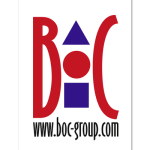What needs improvement?
Currently, a notable challenge lies in the alignment of user experiences across the eight or nine applications within the suite. Transitioning between applications can be somewhat cumbersome due to varying user interfaces. However, the provider is actively addressing this concern by consistently rolling out updates every four to five months, aimed at harmonizing and streamlining the interfaces. This ongoing effort is expected to enhance the user experience over time.
In terms of functionality and features, the platform stands out, offering flexibility with the option for both on-premises and cloud deployment. This flexibility extends to the RPA tool, providing clients with choices tailored to their preferences.
An advantage lies in the shared security and data infrastructure across the toolset, facilitating smooth data transfer between applications. This contrasts with experiences with Oracle, where data transfer may involve complexities such as the need for intermediary file formats like TXL or SCZ.
For how long have I used the solution?
I have been using Nintex Process Platform for the past five years.
What do I think about the stability of the solution?
In the past five years, I have experienced and sold various products within the platform, and I am pleased to note that there have been no instances of downtime or performance issues. The stability of the tools, including Nintex, has been consistently reliable during this period.
What do I think about the scalability of the solution?
The scalability of Nintex's product range is highly commendable. Positioned as an entry-level to medium-top product, it accommodates a broad spectrum of complexity in process execution. The distinction between the Flipflare and K2 products lies primarily in the level of development customization desired. Nintex Workflow Cloud caters effectively to businesses with minimal software development skills, offering a user-friendly, drag-and-drop interface with a no-code mindset. This empowers citizen developers to independently manage workflows.
The versatility of Nintex's offerings extends across the business spectrum, making them suitable for small and medium enterprises as well as large corporations. Notably, a substantial portion of Fortune 500 companies, around forty to fifty percent, currently leverage Symantec's products, attesting to their widespread adoption and effectiveness across diverse business landscapes.
How are customer service and support?
Nintex demonstrates a streamlined approach to customer support with a single support email address. This unified contact point simplifies the process for customers, avoiding the complexities that may arise when dealing with different support areas for various products within a stack, a common challenge faced with competitors like Oracle.
Moreover, Nintex offers a robust 24/7 support model, distributed across approximately seven or eight countries. This ensures comprehensive coverage and responsiveness, particularly valuable for enterprise customers requiring round-the-clock support. In the event that an issue cannot be resolved during regular business hours, Nintex commits to addressing and resolving concerns promptly, even outside standard business hours.
I would rate Nintex's support services at a solid eight to nine. I've encountered minimal issues, and the responsiveness has been exceptional. For instance, when dealing with a site license expiration on Black Iris, I reached out, and the matter was resolved within twenty minutes, showcasing their efficiency in handling such situations.
Moreover, for more intricate technical queries, I've escalated concerns to the country managers. In one instance, needing support on specific technical elements and integration nuances, a single conversation with the country manager facilitated a direct meeting with the development team responsible for the product.
How would you rate customer service and support?
How was the initial setup?
The configuration process with Nintex, especially when using the online tool, Fluent Cloud, is straightforward. While there is some initial configuration required, what sets Nintex apart is its excellent online help feature. Unlike some other platforms, Nintex provides not only articles but also a wealth of how-to videos integrated into the help section. This approach caters well to users, particularly millennials, who may prefer visual resources over traditional manuals.The deployment flexibility offered by Nintex is a notable advantage, supporting both cloud and on-premises models. In my experience, I have worked with both deployment options.
Presently, there is a discernible trend among clients, with a majority leaning towards cloud deployment. This inclination aligns with the prevailing industry shift away from extensive on-premises IT infrastructure. Many clients are actively seeking to streamline their operations and reduce the complexities associated with maintaining large on-premises setups. This shift is particularly evident in the financial services sector, where organizations are committed to leveraging cloud solutions to diminish their reliance on in-house hardware infrastructure. However, it's crucial to acknowledge that concerns persist, especially regarding incident management and disaster recovery. These considerations play a pivotal role in decision-making, prompting some clients to carefully evaluate the implications and safeguards in place for such scenarios.
What about the implementation team?
Regarding the deployment duration for Nintex's workflow, it's challenging to provide a precise timeframe, as it hinges on project specifics. Generally, Nintex's workflow tool is relatively uncomplicated, enabling users to get started with just a few days of training. In comparison, other tools like Automation Anywhere and Oracle often demand multiple weeks due to their inherent complexity.
What other advice do I have?
I would rate Nintex at a solid nine. In my assessment, I haven't come across any automation workflow vendors offering solutions significantly better than Nintex. When examining industry evaluations, particularly from renowned sources like Aragon Research and Forrester's WAV leader report, Nintex consistently stands out in the top quartile for digital business platforms and wide deployments. The recognition extends to other reputable organizations like Gartner and CRM, further affirming Nintex's position as a leader in the field.
Disclosure: My company has a business relationship with this vendor other than being a customer. partner





















